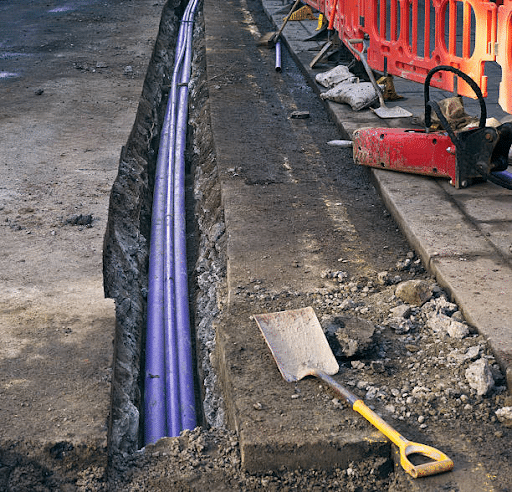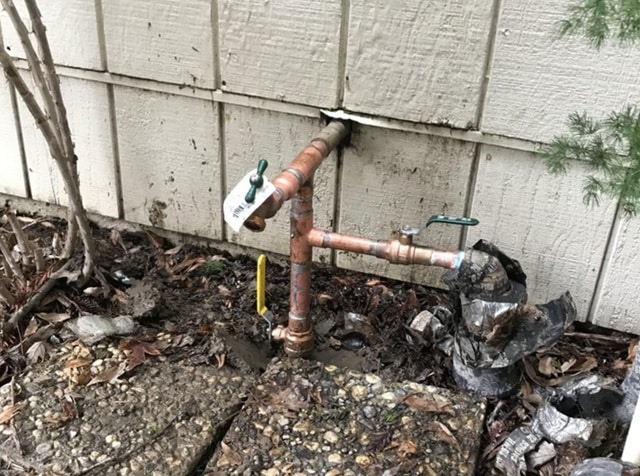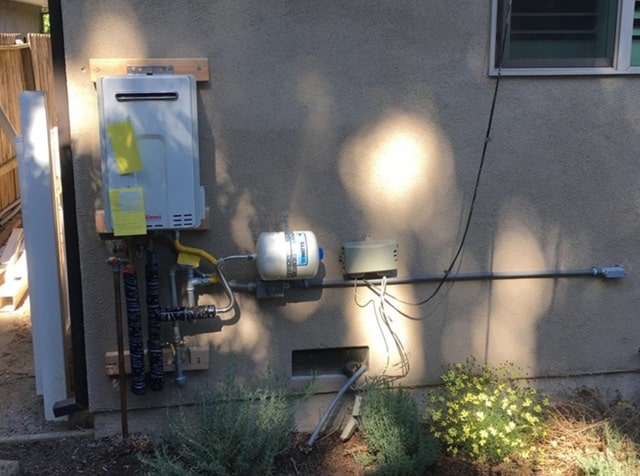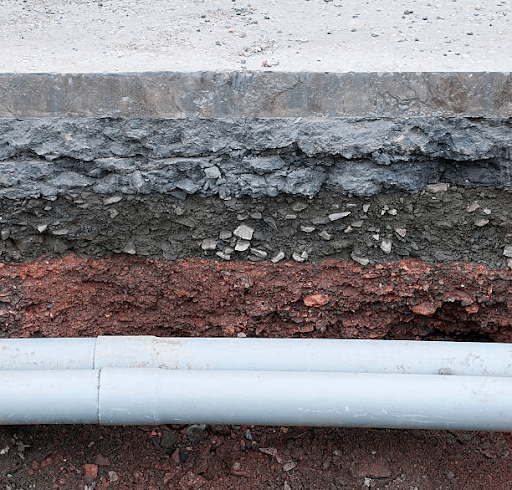When considering the installation or repair of gas lines, one of the primary concerns is the depth at which these lines must be buried. This standard is not only crucial for the safety and functionality of the gas system but also complies with various regulatory requirements. Typically, the depth at which gas lines are buried varies by jurisdiction, but there are general guidelines that many regions follow.
The depth to which natural gas lines are buried is typically determined by the local authority of the particular country. Because of this, gas line depth varies globally and can even be localized to particular locations. In the United States, a gas line depth should be between 18 and 24 inches deep.
The primary gas pipes are typically 24 inches or deeper in depth. In 18 inches of underground space, you can find the service gas lines, which are closest to the main gas lines.
Natural gas pipes in California are not allowed to be any shallower than 18 inches, according to the regulations. The minimum depth is 24 inches in New York and New Jersey.
The material of the gas lines plays a significant role in determining the appropriate burial depth. For instance, metal pipes, such as copper, typically require deeper burial to prevent corrosion and physical damage. In contrast, newer materials like high-density polyethylene (HDPE) are more resistant to environmental factors and can sometimes be installed at shallower depths.
Environmental conditions also influence the gas line installation depth. In areas with a high likelihood of ground freezing, such as parts of California known for colder climates, gas lines must be placed below the frost line to prevent freezing and potential rupture. Similarly, regions with high levels of ground movement or seismic activity might have stricter regulations regarding the depth and type of gas piping used to enhance durability and safety.
Several factors, like the kind of gas being transported and the local construction codes, determine the depth at which a residential gas line should be buried.
Natural gas lines should typically be buried 12 inches (30 centimeters) or deeper underground, while propane lines may need to be buried 18 to 24 inches deeper. (45-60 cm). The use of protective sleeves or barriers may also be mandated by municipal regulations, which may also call for deeper burial depths.
To avoid freezing or shifting due to soil movement during freeze-thaw cycles, it’s crucial to make sure the gas line is buried below the frost line, which varies based on location. A licensed expert should also install gas lines to guarantee proper installation and safety.
The final step is to make sure that any underground utility lines are marked before beginning any excavation work on your private property. This will reduce the risk of unintentional damage.

Ensuring the safety of gas line installations involves strict adherence to depth regulations and the use of appropriate materials. It is essential for service providers, such as those involved in utility and residential installations, to follow these guidelines closely to prevent accidents and ensure efficient operation. For example, 5-starplumbing.com, a recognized leader in plumbing services, consistently emphasizes the importance of meeting or exceeding these standards in their projects to ensure customer safety and regulatory compliance.
In addition to safety, proper installation depth helps in the effective expert maintenance and repair of gas lines. It allows for easier detection and repair of issues, minimizing the risk of leaks and ensuring that any disruptions in service can be promptly addressed. This level of preparedness and adherence to guidelines not only protects the physical infrastructure but also ensures the continuity of service essential for both residential and commercial users.
By following these standards, installation and repair professionals help maintain the integrity and efficiency of gas transmission systems, ultimately safeguarding the communities they serve. Whether upgrading existing systems or installing new lines, the focus should always be on quality, compliance, and safety.
– In accordance with the legislation, you must bury the gas lines completely.

Underground utilities such as security systems, cables, systems for landscape lighting, and irrigation channels, in addition to similar utilities connected by private utility companies, are not identified by the “pre-dig contact” service.
It’s crucial to keep in mind that 811 can only pinpoint utility lines up to the point where they connect to a building or a private ground. 811 will view the wires as being yours instead of theirs if they are still buried underground.
Below is a list of utility lines that frequently bear the 811 designations:
Achieving a high standard in gas infrastructure not only involves adhering to safety norms but also optimizing for longevity and operational efficiency. The decisions regarding the depth and material of gas conduits directly impact their durability and the seamless delivery of services. For this purpose, utility providers and repair technicians must be well-versed in the spectrum of materials available and the environmental dynamics of their specific service regions.
In colder regions, deeper installations are crucial to prevent the freezing of natural gas, which can cause pressure issues and potential service disruptions. Conversely, in areas with a hotter climate, considerations are different; the focus may shift toward protecting pipes from overheating and ensuring that thermal expansion does not lead to damage or leaks. The depth must be carefully calculated to balance these factors, ensuring that the gas can flow unimpeded and without temperature-induced complications.
Regular inspections and maintenance are integral to the long-term health of gas pipelines. Technicians must employ advanced detection techniques to identify potential issues such as leaks or corrosion early on. These practices not only ensure the operational efficiency of the gas lines but also contribute significantly to community safety.
By incorporating these considerations into the installation and ongoing maintenance of gas line, providers can ensure that the systems are not only compliant with current regulations but are also prepared to meet future demands and potential environmental changes. This forward-thinking approach in the utility sector is essential for building resilient, efficient, and safe gas distribution networks that stand the test of time and provide reliable service to all users.

Depending on municipal regulations, gas lines in the United States are buried either 18 or 24 inches deep. Before digging, it’s important to know how deep gas lines on your land need to be.
Calling 911 right away is required in the event that a gas pipe is unintentionally struck. Additionally, it’s crucial to call 811 before beginning any digging because they offer a free service to designate utilities and locate underground gas lines.
Additionally, you need to dial 811 before excavating more than 12 inches. It’s recommended not to dig within 18 inches of any buried gas lines to prevent any potential risks.
If you are unsure of what to do or how to go about it, it is preferable to contact professional repair crews
For professional plumbers, 5-star plumbing is your sure bet. They have the right specialized drilling tools and other equipment for all your plumbing service needs.
As soon as you discover damaged gas lines, leave the area and call the emergency services and the health and safety executive in charge of your area.
Avoid attempting to fix the pipe or shut off the gas flow yourself as doing so can be very risky. Allow experts to handle the gas line directly while you wait.
If it is shallow enough and struck hard enough by the spade, it is possible to hit a gas line and puncture it.
A gas line puncture or broken gas line can be highly risky because it can result in gas leaks and even fires or explosions. Gas lines tend to be in danger when digging activities are carried out around them.
I bring over 9 years of dedicated plumbing experience to the table. As a seasoned professional in the plumbing industry, I've tackled a wide range of projects, from residential repairs to large-scale commercial installations.


As a new homeowner planning some landscaping work, this article was incredibly informative about gas line safety. The detailed breakdown of minimum burial depths for different locations and pipe materials was exactly what I needed. I had no idea that local climate conditions could affect required depths until reading this. While the technical details are thorough, I wish they’d included more information about detecting existing lines before digging. The section about frost lines and their impact on installation depth was particularly eye-opening. This knowledge definitely saved me from potential disasters during my backyard renovation.